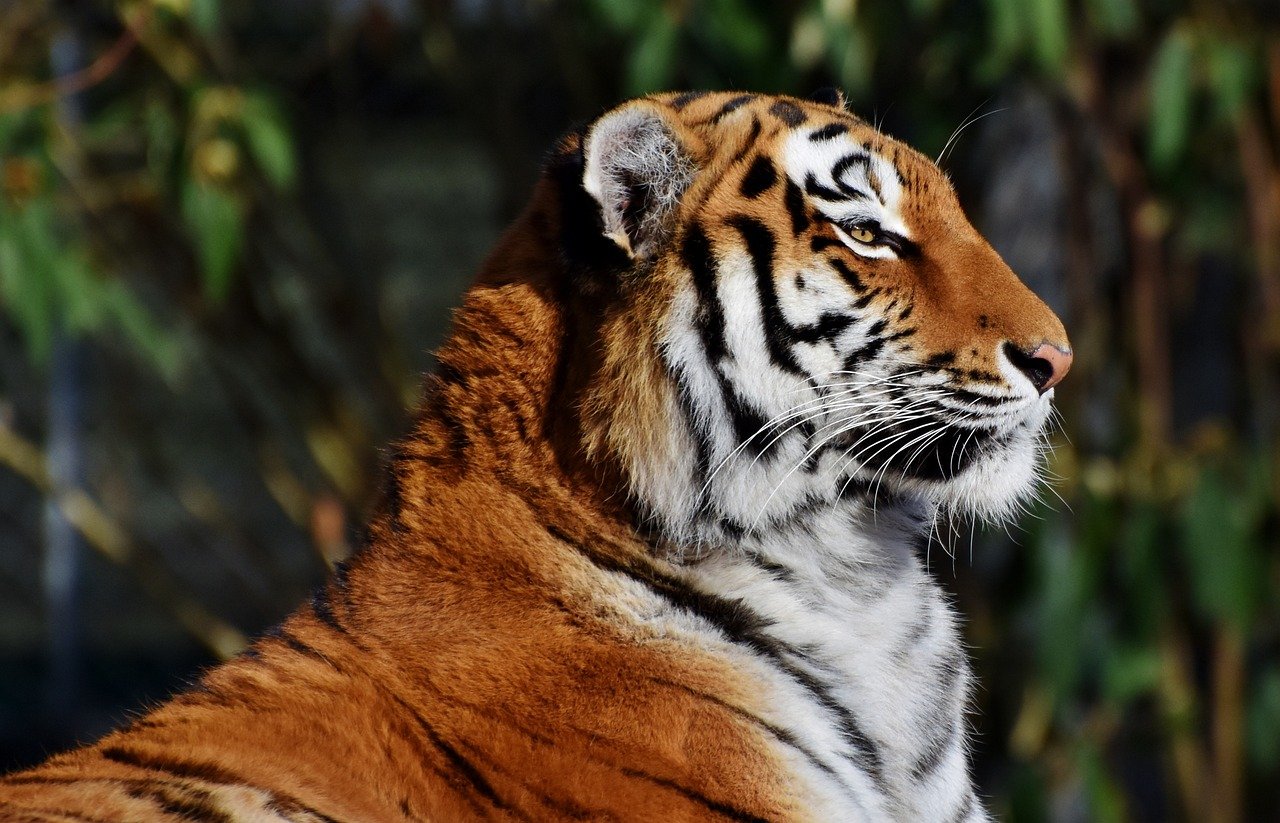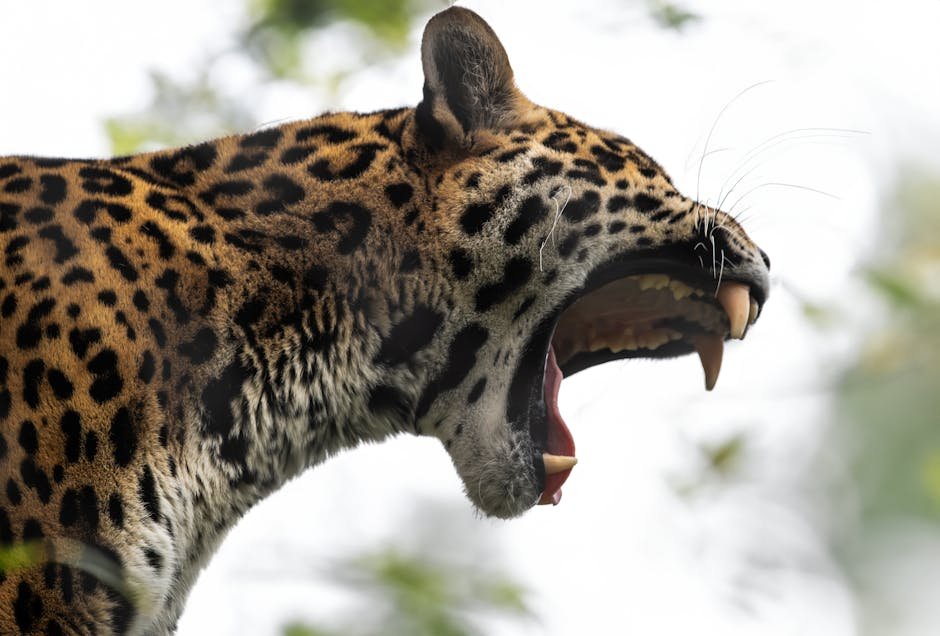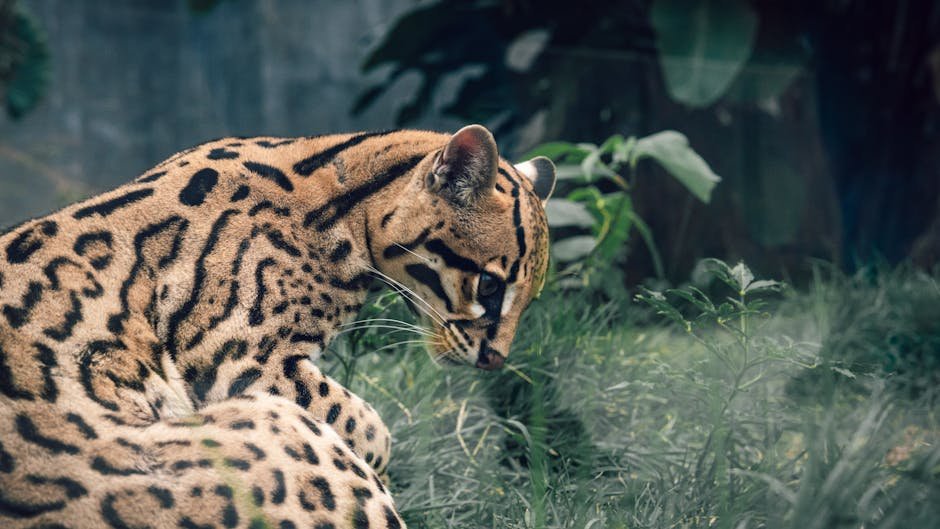Big cats have always fascinated humans with their majestic appearance and mysterious behaviors. While many of us think of them as solitary hunters, several big cat species have surprisingly complex social structures. These structures are often overlooked but play a crucial role in their survival and interaction. Let’s delve into the world of these captivating creatures and uncover the intricate social tapestries they weave.
Lions: Kings of the Social Jungle
Lions are perhaps the most well-known of all big cats when it comes to social structures. Unlike other big cats, lions live in groups called prides. A pride typically consists of multiple related females, their offspring, and a small number of adult males. This social system is built on cooperation, where lionesses hunt together and care for each other’s young. The males, on the other hand, are responsible for protecting the pride from intruders. This cooperative living allows lions to thrive in the savannahs, making them formidable predators.
Cheetahs: The Fast and the Friendly
Cheetahs, known for their speed, also exhibit interesting social behaviors. While female cheetahs are solitary and only come together with males to mate, male cheetahs often form small groups called “coalitions.” These coalitions are usually made up of brothers from the same litter and can last a lifetime. By banding together, they increase their chances of defending territories and securing mates. This brotherly bond is a unique aspect of cheetah society, showcasing their need for companionship and cooperation.
Tigers: Solitary Yet Social

Tigers are typically seen as solitary animals, but their social interactions are more complex than they seem. While they do not form groups like lions, tigers maintain large territories that often overlap with others. They communicate through scent markings and vocalizations, which play a significant role in their social lives. Mother tigers are particularly social with their cubs, teaching them hunting skills and survival techniques. This bond between a mother and her cubs is essential for the next generation’s success in the wild.
Leopards: Masters of Adaptability
Leopards are known for their adaptability and solitary nature. However, their social structures are subtly intricate. Leopards have overlapping territories, and while they are solitary hunters, they often interact with each other through scent markings and vocal calls. Mothers play a crucial role in the upbringing of their young, teaching them essential survival skills. This solitary yet interconnected lifestyle allows leopards to thrive in various environments, from dense forests to arid deserts.
Snow Leopards: Solitude in the Snow

Snow leopards, often dubbed the “ghosts of the mountains,” are elusive and solitary creatures. However, their social lives are not devoid of complexity. These big cats communicate through vocalizations and scent markings, which help them maintain vast territories. The bond between a snow leopard mother and her cubs is particularly strong, with the mother teaching her young how to navigate the challenging mountainous terrain. This nurturing relationship ensures the cubs’ survival in a harsh environment.
Jaguars: Solitary Guardians of the Jungle

Jaguars are solitary creatures, but their social interactions are fascinating to observe. They maintain large territories in the dense jungles of the Americas, using scent markings and vocal calls to communicate. A jaguar mother’s role is crucial in the upbringing of her cubs, teaching them hunting techniques and survival skills. This solitary yet nurturing lifestyle allows jaguars to thrive in their natural habitat, making them one of the top predators in the jungle ecosystem.
Pumas: The Secretive Stalkers
Pumas, also known as mountain lions or cougars, are secretive and solitary by nature. However, their social interactions are more complex than they appear. Pumas communicate through vocalizations and scent markings, which help them establish territories and avoid conflicts. The bond between a puma mother and her cubs is vital for the cubs’ survival, as she teaches them essential hunting skills and survival techniques. This solitary yet nurturing lifestyle allows pumas to adapt to various environments, from forests to deserts.
Clouded Leopards: Mysterious Forest Dwellers
Clouded leopards are elusive and mysterious creatures that inhabit dense forests in Southeast Asia. While they are solitary by nature, their social interactions are intriguing. Clouded leopards communicate through vocalizations and scent markings, which help them maintain territories and avoid conflicts. The bond between a clouded leopard mother and her cubs is strong, with the mother teaching her young essential survival skills. This nurturing relationship ensures the cubs’ survival in the challenging forest environment.
Caracals: The Elusive Hunters
Caracals, known for their striking appearance and tufted ears, are solitary hunters. However, their social interactions are more complex than they seem. Caracals communicate through vocalizations and scent markings, which help them establish territories and avoid conflicts. The bond between a caracal mother and her cubs is crucial for the cubs’ survival, as she teaches them essential hunting skills and survival techniques. This solitary yet nurturing lifestyle allows caracals to thrive in various environments, from savannahs to forests.
Servals: The Solitary Stalkers
Servals are solitary creatures known for their exceptional hunting skills and long legs. While they prefer to hunt alone, servals have intriguing social interactions. They communicate through vocalizations and scent markings, which help them maintain territories and avoid conflicts. The bond between a serval mother and her cubs is vital for the cubs’ survival, as she teaches them essential hunting skills and survival techniques. This solitary yet nurturing lifestyle allows servals to thrive in their natural habitats.
Eurasian Lynx: Silent Predators of the North
Eurasian lynx are solitary predators that inhabit the forests of Europe and Asia. However, their social interactions are more complex than they appear. Lynx communicate through vocalizations and scent markings, which help them establish territories and avoid conflicts. The bond between a lynx mother and her cubs is crucial for the cubs’ survival, as she teaches them essential hunting skills and survival techniques. This solitary yet nurturing lifestyle allows lynx to thrive in their natural habitats.
Canadian Lynx: Masters of the Snow
Canadian lynx are solitary creatures adapted to the snowy environments of North America. While they prefer to hunt alone, their social interactions are fascinating. Lynx communicate through vocalizations and scent markings, which help them maintain territories and avoid conflicts. The bond between a lynx mother and her cubs is vital for the cubs’ survival, as she teaches them essential hunting skills and survival techniques. This solitary yet nurturing lifestyle allows Canadian lynx to thrive in their harsh environments.
Bobcats: The Adaptable Predators
Bobcats are adaptable predators found throughout North America. While they are solitary hunters, their social interactions are intriguing. Bobcats communicate through vocalizations and scent markings, which help them establish territories and avoid conflicts. The bond between a bobcat mother and her cubs is crucial for the cubs’ survival, as she teaches them essential hunting skills and survival techniques. This solitary yet nurturing lifestyle allows bobcats to thrive in various environments, from forests to deserts.
Fishing Cats: Aquatic Hunters
Fishing cats, known for their affinity for water, are solitary hunters found in the wetlands of Asia. However, their social interactions are more complex than they appear. Fishing cats communicate through vocalizations and scent markings, which help them maintain territories and avoid conflicts. The bond between a fishing cat mother and her cubs is vital for the cubs’ survival, as she teaches them essential hunting skills and survival techniques. This solitary yet nurturing lifestyle allows fishing cats to thrive in their aquatic habitats.
Ocelots: The Forest Dwellers

Ocelots are solitary creatures that inhabit the dense forests of Central and South America. While they prefer to hunt alone, their social interactions are fascinating. Ocelots communicate through vocalizations and scent markings, which help them establish territories and avoid conflicts. The bond between an ocelot mother and her cubs is crucial for the cubs’ survival, as she teaches them essential hunting skills and survival techniques. This solitary yet nurturing lifestyle allows ocelots to thrive in their natural habitats.
In conclusion, while many big cats are solitary by nature, their social structures are more complex than they appear. From the cooperative prides of lions to the solitary yet nurturing lifestyles of other big cats, these majestic creatures have developed unique social systems that allow them to thrive in their natural environments. Understanding these social structures not only deepens our appreciation for these magnificent animals but also highlights the importance of conserving their habitats for future generations.

Growing up traveling and experiencing new cultures and wonders, I have had a passion for nature, adventuring, photography, and videography. I am currently working towards a BSc in Biodiversity and Ecology at Stellenbosch University, and I hope to specialise in Marine Sciences one day.
Please send any feedback to Feedback@animalsaroundtheglobe.com






